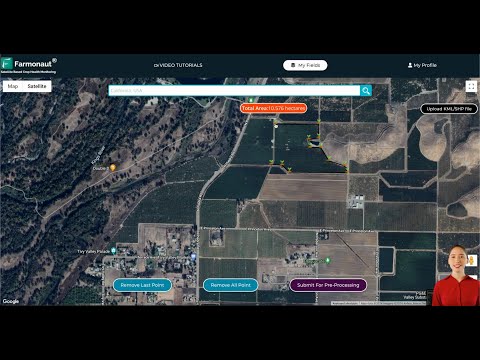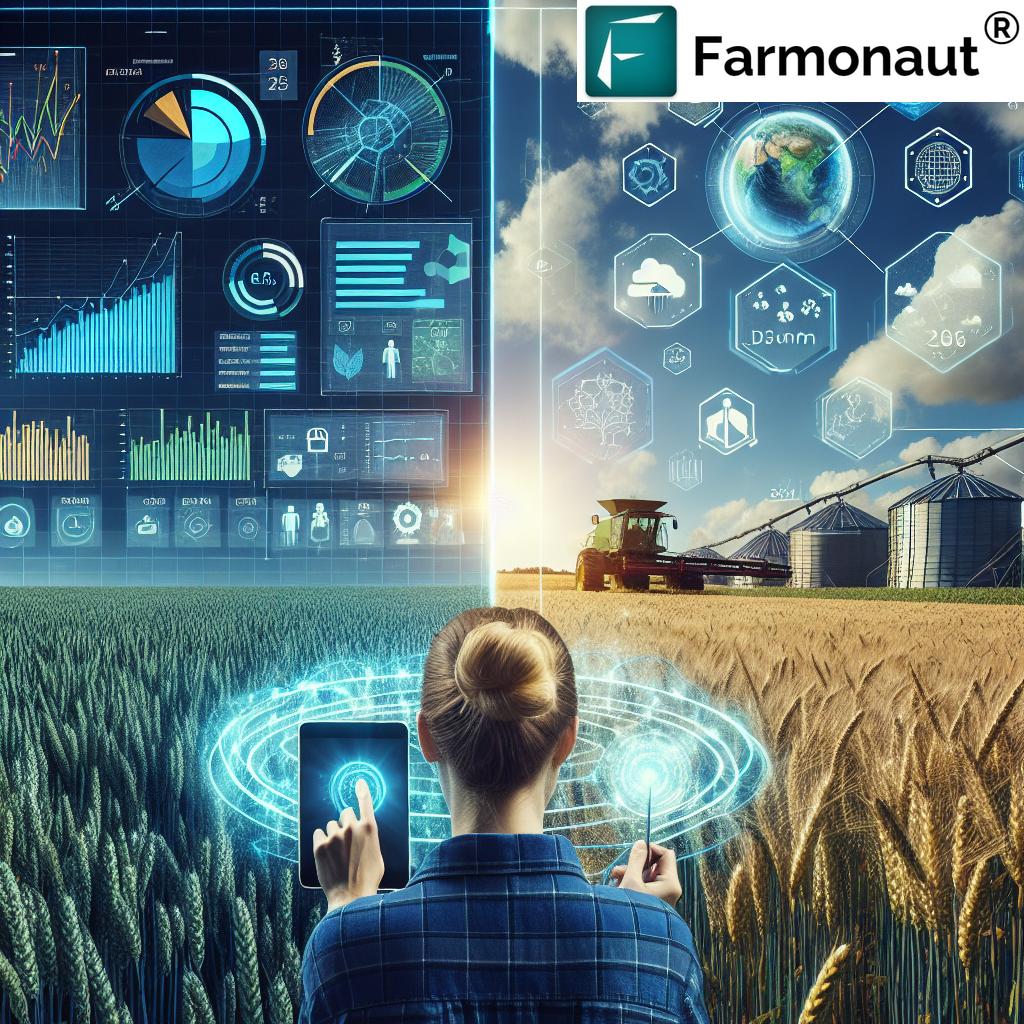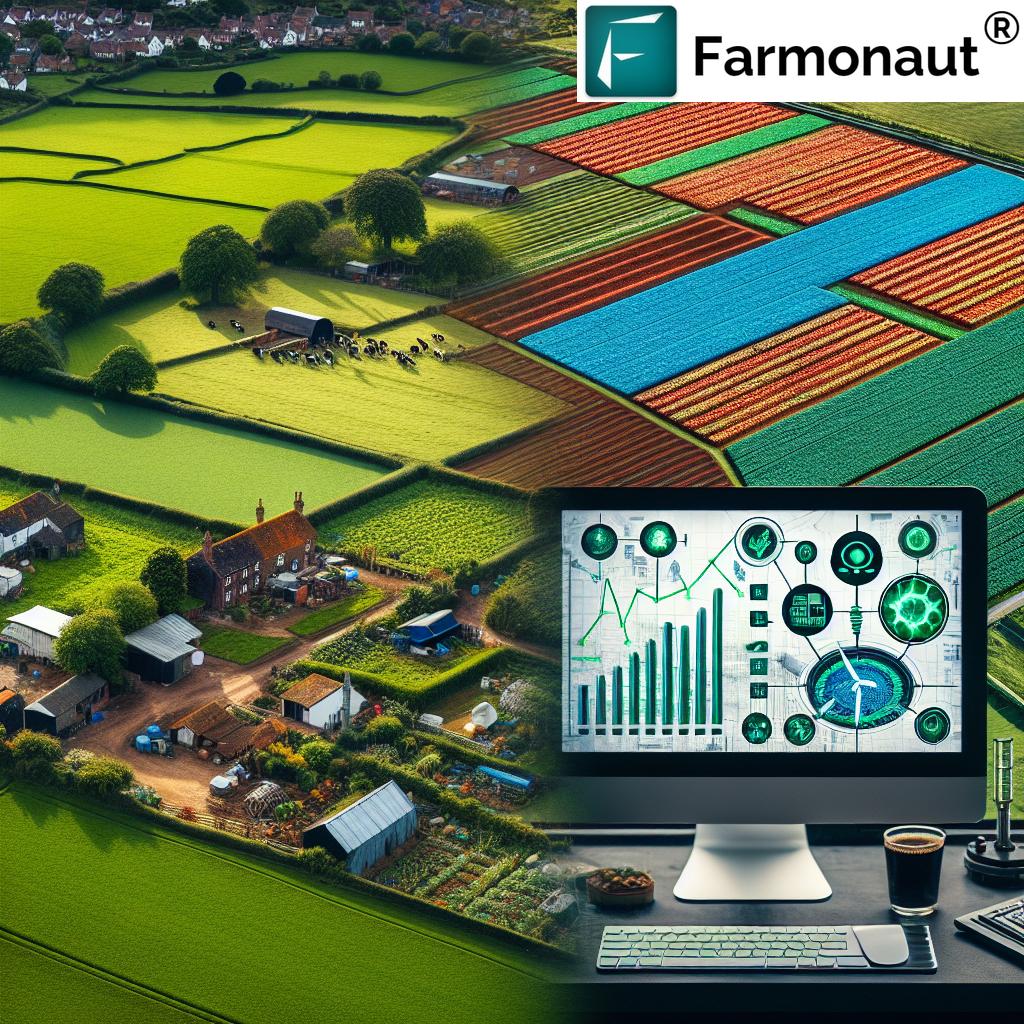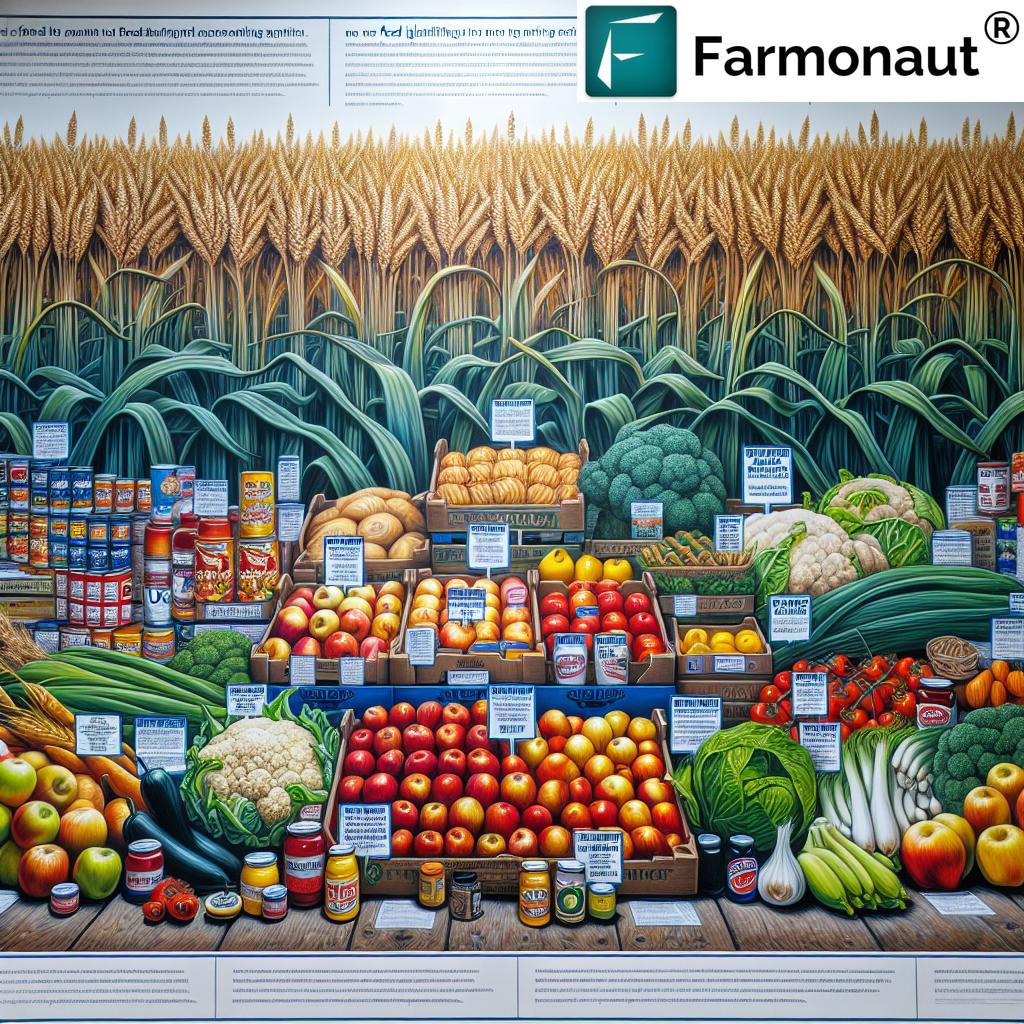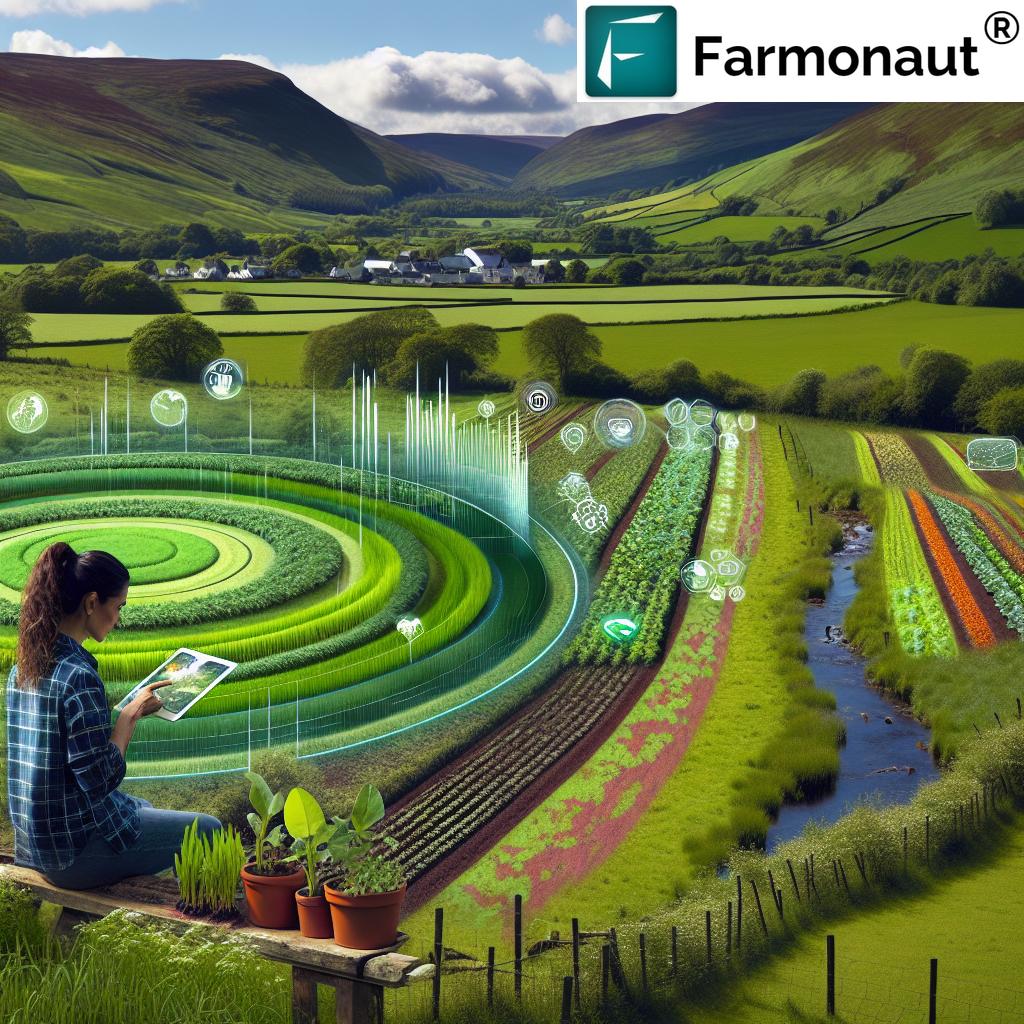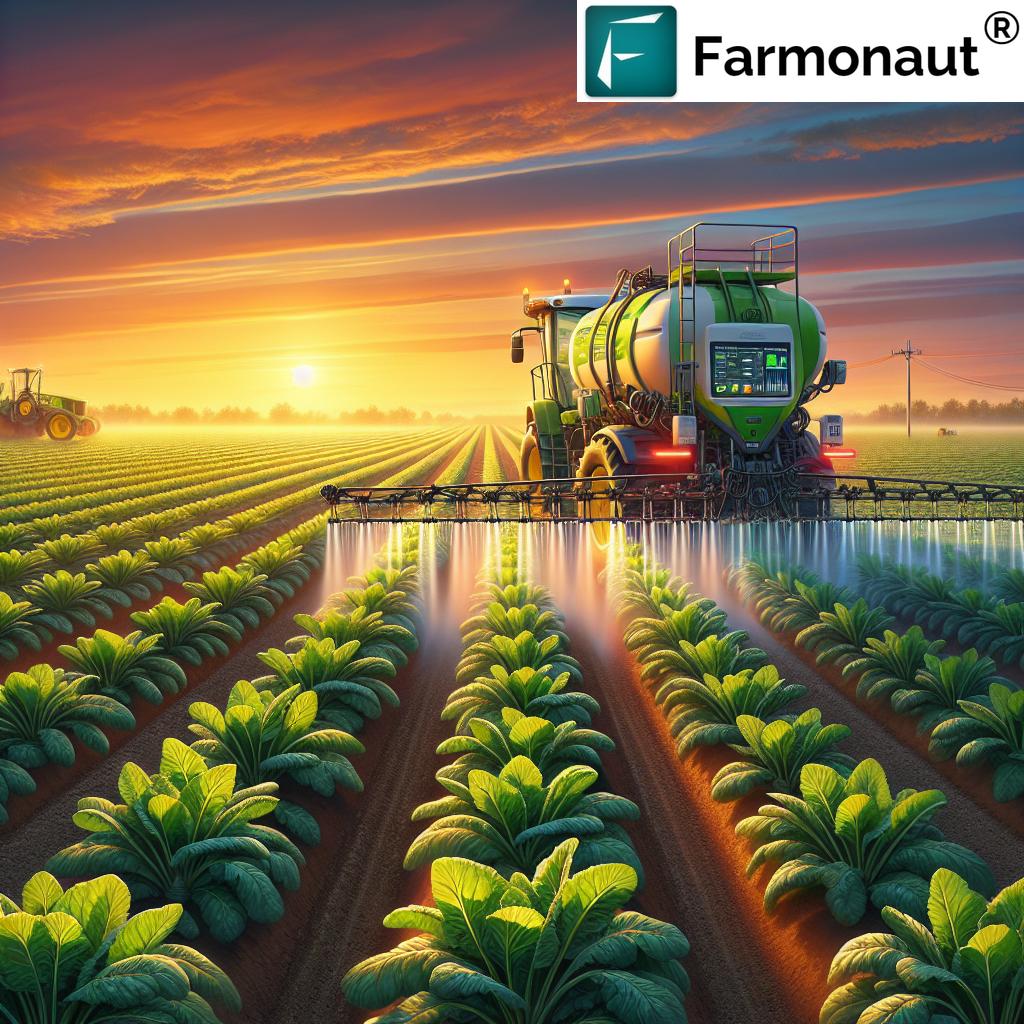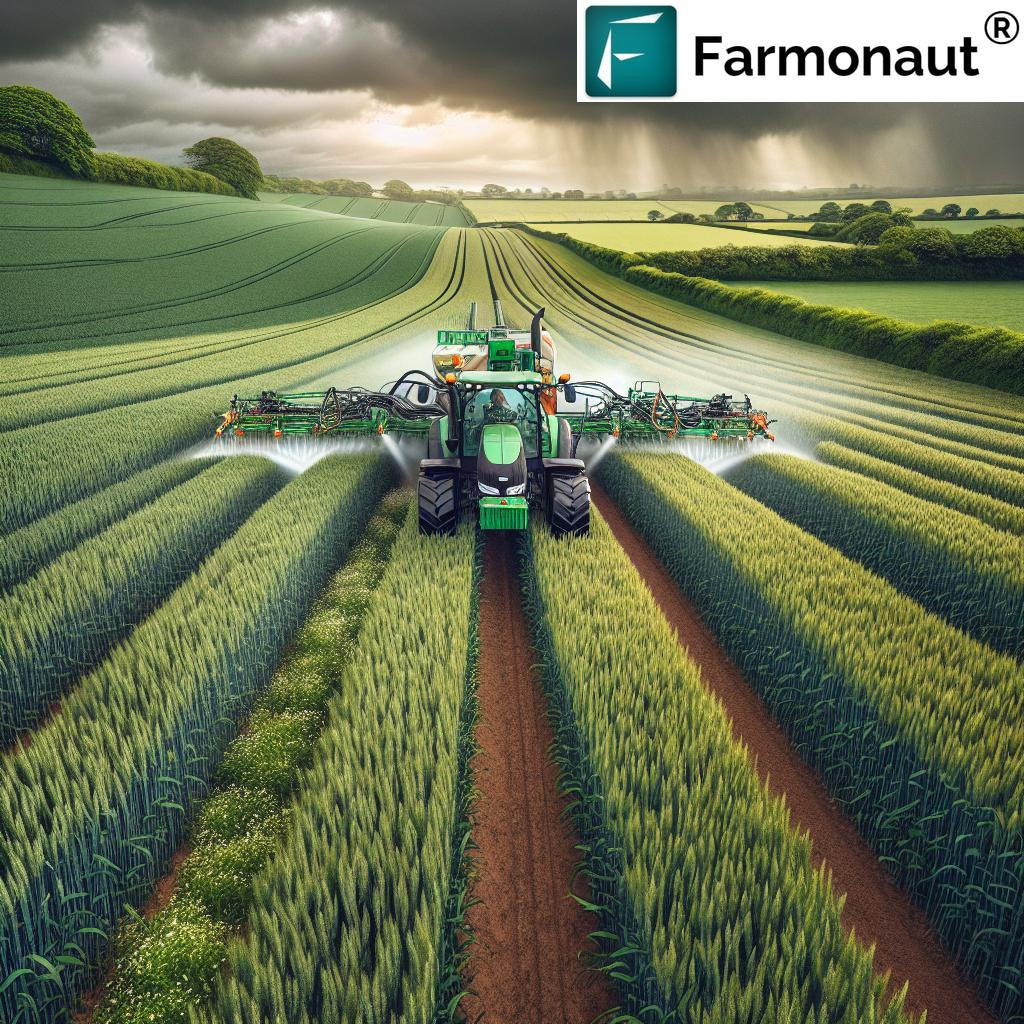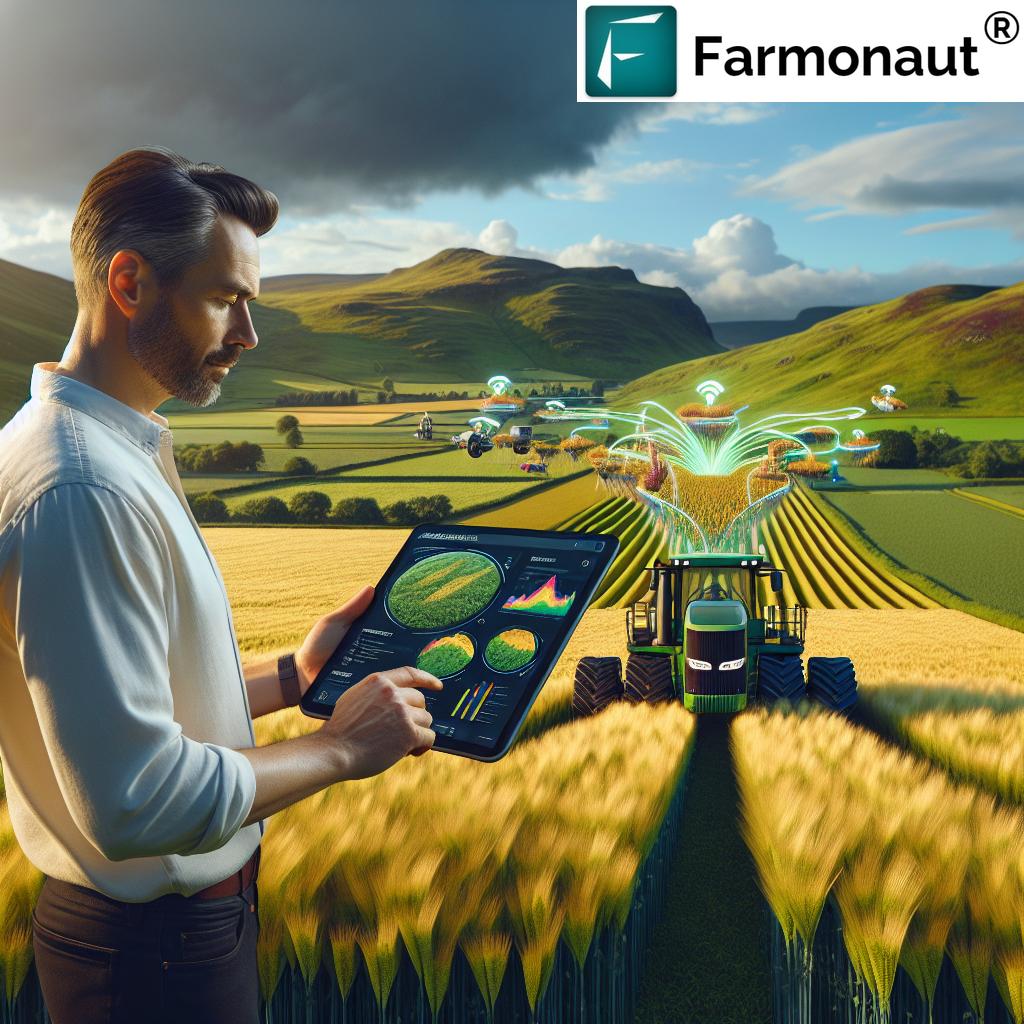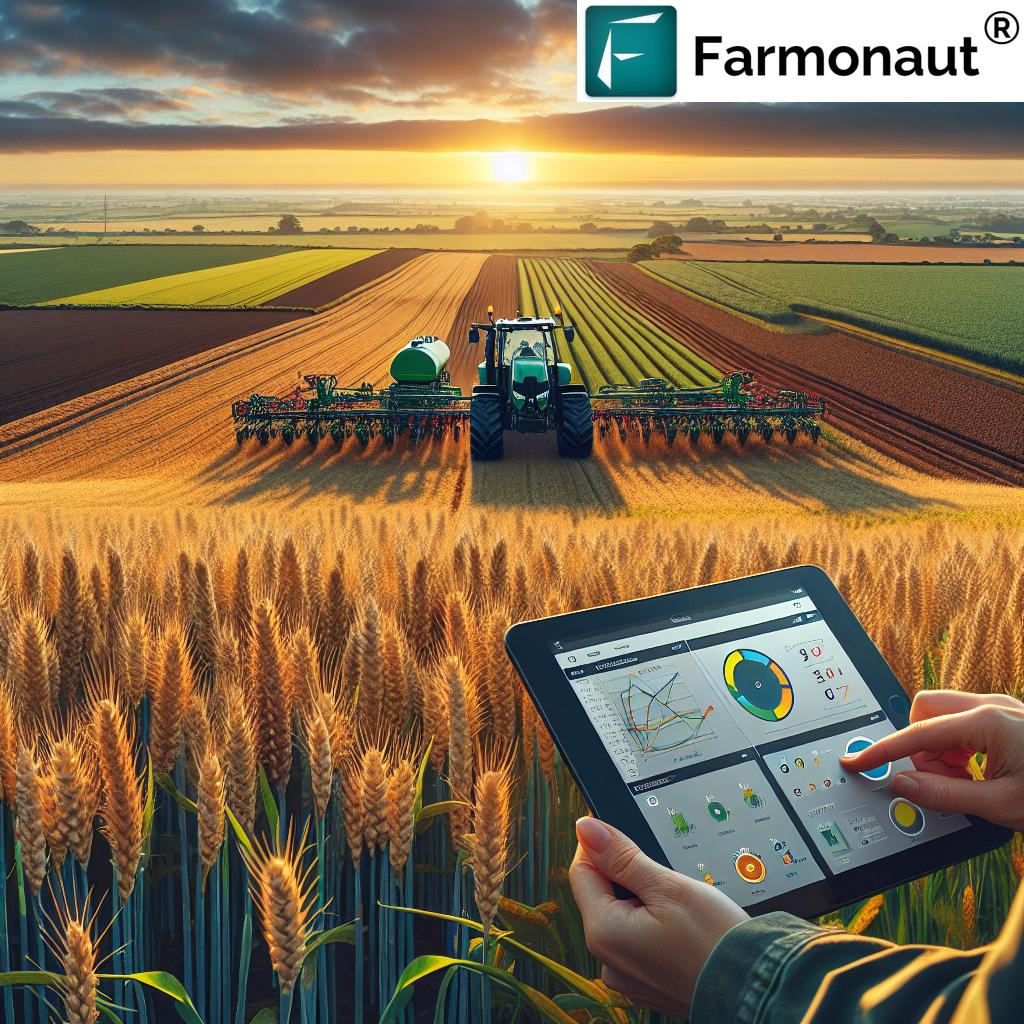Revolutionizing Agriculture: How Renewable Energy Powers Vertical Farming Solutions in Scotland
“Vertical farms using LED lighting can reduce energy consumption by up to 70% compared to traditional farming methods.”
Welcome to the future of agriculture, where innovation meets sustainability in the heart of Scotland’s farming sector. We’re excited to take you on a journey through the revolutionary world of vertical farming, powered by renewable energy sources. As we explore this cutting-edge intersection of technology and agriculture, we’ll uncover how sustainable agriculture technology is transforming the way we grow food, conserve resources, and adapt to climate change.
In this comprehensive guide, we’ll delve into the precision farming solutions that are reshaping Scotland’s agricultural landscape. From advanced crop management software to smart farming techniques, we’ll examine how agricultural data analytics are optimizing plant growth and boosting yields in ways never before possible.
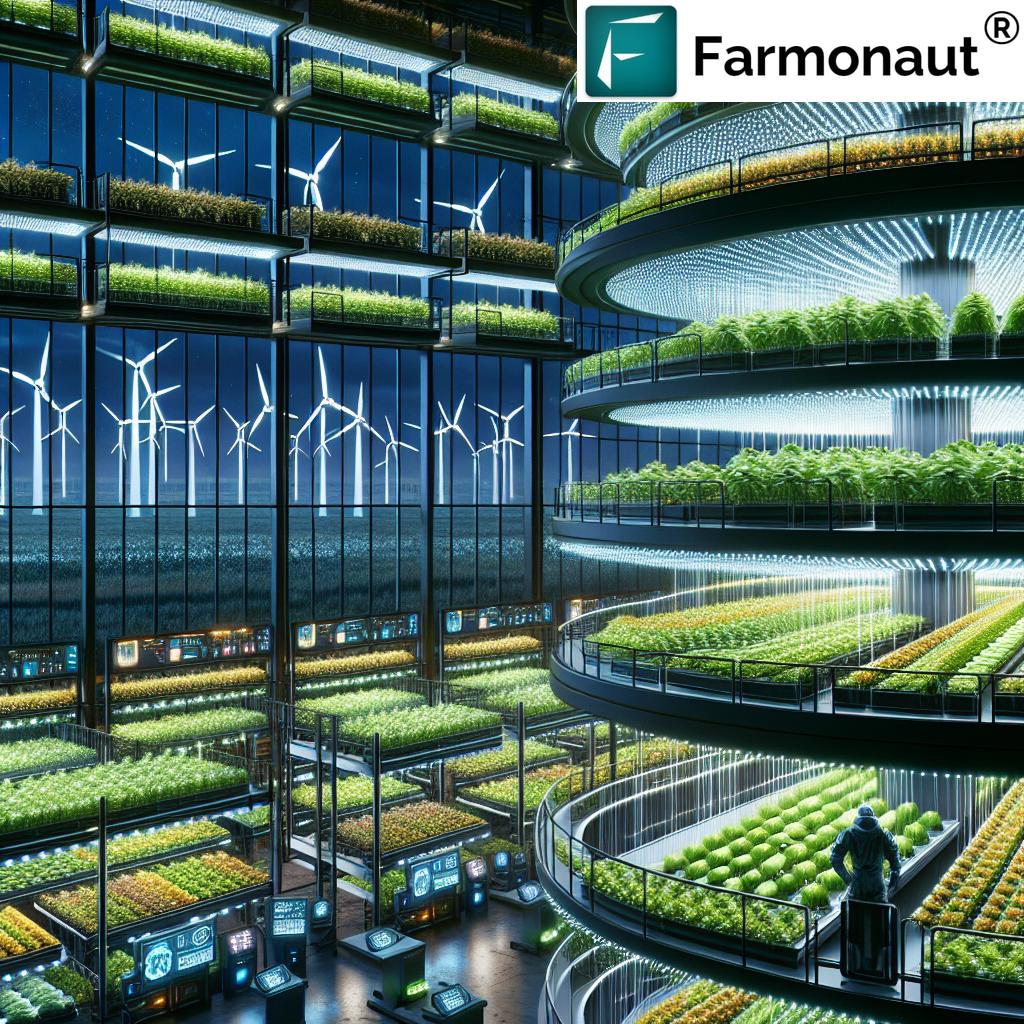
But first, let’s set the stage with a brief overview of why vertical farming and renewable energy are so crucial for Scotland’s agricultural future:
- Limited arable land due to Scotland’s mountainous terrain
- Harsh climate conditions that can impact traditional farming methods
- The need for sustainable food production to meet growing demand
- Scotland’s commitment to renewable energy and reducing carbon emissions
Now, let’s dive into the exciting world of vertical farming systems and how they’re revolutionizing agriculture in Scotland!
The Rise of Vertical Farming in Scotland
Vertical farming represents a paradigm shift in agricultural practices, offering a solution to many challenges faced by traditional farming methods. In Scotland, where arable land is at a premium and weather conditions can be unpredictable, vertical farming presents an opportunity to grow crops year-round in controlled environments.
Here are some key advantages of vertical farming systems:
- Maximized space utilization through vertical stacking of crops
- Controlled environment agriculture (CEA) for optimal growing conditions
- Reduced water usage through recirculating hydroponic systems
- Minimal pesticide use due to enclosed growing spaces
- Increased crop yields per square meter compared to traditional farming
As we can see, vertical farming offers a promising solution for sustainable food production in Scotland. But what powers these innovative systems? That’s where renewable energy comes into play.
Renewable Energy: The Backbone of Vertical Farming
The success of vertical farming systems hinges on efficient energy use. In Scotland, where renewable energy sources are abundant, vertical farms are leveraging clean power to drive their operations. Let’s explore how different renewable energy sources are being harnessed to power vertical farming solutions:
1. Solar Power
Scotland may not be known for its sunny weather, but solar energy still plays a crucial role in powering vertical farms. Advanced photovoltaic systems can capture and store energy even on overcast days, providing a reliable source of clean electricity for lighting, climate control, and automation systems.
2. Wind Energy
With its blustery coasts and highlands, Scotland is a prime location for wind energy production. Many vertical farms are tapping into this abundant resource, using wind turbines to generate power for their energy-intensive operations.
3. Hydroelectric Power
Scotland’s numerous rivers and lochs provide ample opportunities for hydroelectric power generation. This clean, renewable energy source is being utilized by vertical farms to ensure a steady supply of electricity for their 24/7 operations.
4. Geothermal Energy
While not as widely used as other renewable sources, geothermal energy is gaining traction in Scotland’s vertical farming sector. This stable, renewable heat source can be particularly useful for maintaining optimal temperatures in vertical farming environments.
By harnessing these renewable energy sources, vertical farms in Scotland are not only reducing their carbon footprint but also creating a more resilient and sustainable food production system.
Precision Farming Solutions: The Heart of Vertical Farming
At the core of vertical farming’s success are precision farming solutions that leverage cutting-edge technology to optimize crop growth and resource use. Let’s explore some of the key technologies driving this agricultural revolution:
1. Advanced LED Lighting Systems
Energy-efficient LED lighting is a game-changer for vertical farms. These systems can be tailored to provide the exact spectrum and intensity of light needed for each crop, maximizing photosynthesis and growth rates while minimizing energy consumption.
2. Climate Control Technology
Maintaining the perfect growing environment is crucial for vertical farms. Advanced climate control systems, powered by renewable energy, regulate temperature, humidity, and CO2 levels with precision, ensuring optimal conditions for plant growth year-round.
3. Hydroponic and Aeroponic Systems
These soilless growing techniques are at the heart of many vertical farming operations. By delivering nutrients directly to plant roots, these systems maximize water efficiency and allow for precise control over nutrient uptake.
4. Automation and Robotics
Farm automation technology is revolutionizing vertical farming operations. From robotic seeders and harvesters to automated nutrient delivery systems, these technologies are increasing efficiency and reducing labor costs.
Explore Farmonaut’s innovative solutions for precision agriculture:
“Scotland’s vertical farms can produce up to 15 times more crops per square meter than conventional agriculture.”
The Role of Agricultural Data Analytics
In the world of vertical farming, data is king. Agricultural data analytics play a crucial role in optimizing every aspect of the growing process. Here’s how:
- Real-time monitoring of plant health and growth rates
- Predictive analytics for harvest timing and yield estimation
- Optimization of resource use, including water, nutrients, and energy
- Early detection of potential issues, such as pest infestations or equipment malfunctions
By leveraging big data and machine learning algorithms, vertical farms can continuously improve their operations, leading to higher yields, better quality produce, and more sustainable practices.
Smart Farming Techniques in Vertical Agriculture
Smart farming techniques are revolutionizing the way vertical farms operate. These innovative approaches combine IoT (Internet of Things) devices, sensors, and data analytics to create highly efficient and responsive growing environments. Let’s explore some key smart farming techniques being used in Scotland’s vertical farms:
1. IoT-Enabled Sensor Networks
A network of sensors throughout the vertical farm continuously monitors various parameters such as light levels, temperature, humidity, and nutrient concentrations. This real-time data allows for immediate adjustments to maintain optimal growing conditions.
2. AI-Powered Crop Management
Artificial intelligence algorithms analyze vast amounts of data to make predictive decisions about crop management. This can include adjusting nutrient mixes, optimizing lighting schedules, and predicting harvest times with incredible accuracy.
3. Computer Vision for Plant Health Monitoring
Advanced camera systems and computer vision algorithms can detect early signs of plant stress or disease, allowing for prompt intervention and minimizing crop losses.
4. Precision Irrigation Systems
Smart irrigation systems use data from soil moisture sensors and plant growth metrics to deliver precisely the right amount of water to each plant, significantly reducing water waste.
These smart farming techniques not only increase efficiency and yields but also contribute to the overall sustainability of vertical farming operations.
Discover how Farmonaut’s satellite technology is revolutionizing land use in agriculture:
Climate-Resilient Agriculture: Adapting to Scotland’s Changing Weather
One of the most significant advantages of vertical farming is its ability to create climate-resilient agriculture practices. In Scotland, where weather patterns can be unpredictable and extreme, this is particularly valuable. Here’s how vertical farming is addressing climate change challenges:
- Year-round crop production, regardless of outside weather conditions
- Protection from extreme weather events such as storms or floods
- Reduced vulnerability to pests and diseases that may increase with climate change
- Efficient use of resources, particularly water, which may become scarcer in the future
By creating controlled environments powered by renewable energy, vertical farms in Scotland are not only adapting to climate change but also contributing to its mitigation by reducing the carbon footprint of food production.
The Economic Impact: Agtech Investment Opportunities
The rise of vertical farming and renewable energy in Scotland’s agricultural sector is creating exciting agtech investment opportunities. Here are some key areas attracting investor interest:
- Vertical farming infrastructure and technology development
- Renewable energy systems tailored for agricultural applications
- Agricultural data analytics and AI-driven crop management platforms
- Innovative hydroponic and aeroponic growing systems
- Robotics and automation solutions for vertical farms
These investment opportunities are not only driving innovation in the agricultural sector but also contributing to Scotland’s economy by creating new jobs and fostering a thriving agtech ecosystem.
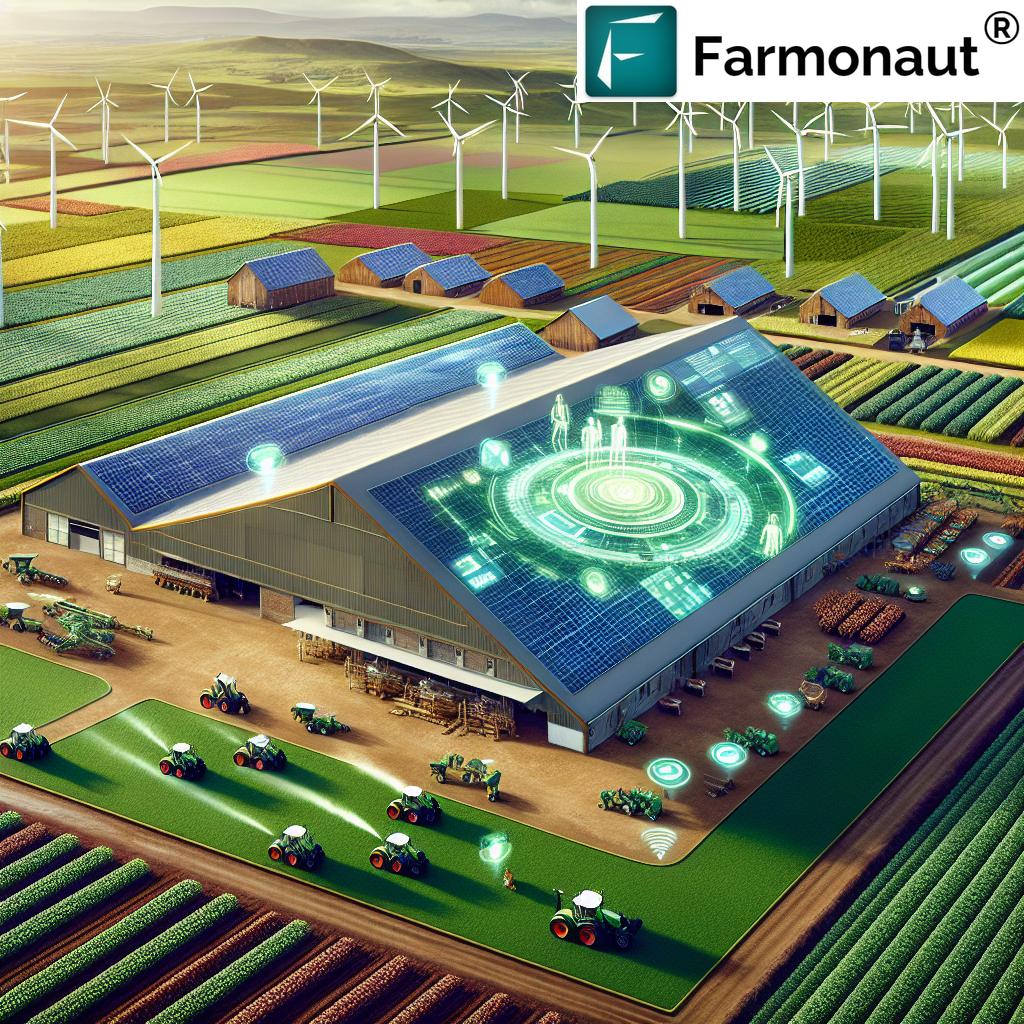
Addressing Agricultural Supply Chain Challenges
Vertical farming powered by renewable energy is also helping to address some of the key challenges in the agricultural supply chain. Here’s how:
- Reduced transportation costs and emissions by growing food closer to urban centers
- Increased food security through year-round local production
- Improved traceability and quality control in the food supply chain
- Reduced food waste through precise harvesting and shorter time-to-market
By streamlining the supply chain and reducing reliance on imports, vertical farming is helping to create a more resilient and sustainable food system for Scotland.
Conservation Efforts and Biodiversity
While vertical farming focuses on controlled environments, it also has positive implications for conservation efforts and biodiversity in Scotland. Here’s how:
- Reduced pressure on natural habitats by minimizing land use for agriculture
- Decreased use of pesticides, benefiting local ecosystems
- Potential for reforestation or rewilding of land previously used for traditional farming
- Conservation of water resources through highly efficient irrigation systems
By reducing the environmental impact of agriculture, vertical farming allows for greater focus on conservation efforts across Scotland’s diverse landscapes.
Learn how Farmonaut is leveraging remote sensing and machine learning for a greener future:
Comparison of Vertical Farming Technologies
To better understand the impact of different renewable energy sources on vertical farming, let’s compare their applications and benefits:
| Renewable Energy Source | Energy Efficiency Rating (1-10) | Application in Vertical Farming | Estimated Cost Savings (%) | Environmental Impact (CO2 reduction in tons/year) | Crop Yield Increase (%) |
|---|---|---|---|---|---|
| Solar | 8 | LED lighting, climate control | 30% | 50 | 20% |
| Wind | 9 | Power for automation, HVAC systems | 35% | 60 | 25% |
| Geothermal | 7 | Climate control, water heating | 25% | 40 | 15% |
| Hydroelectric | 9 | General power supply, pumps | 40% | 70 | 30% |
This comparison illustrates the diverse applications and benefits of renewable energy sources in vertical farming systems. Each technology offers unique advantages, contributing to the overall efficiency and sustainability of these innovative agricultural operations.
The Future of Vertical Farming in Scotland
As we look to the future, the potential for vertical farming in Scotland is immense. Here are some exciting developments on the horizon:
- Integration of vertical farms with urban architecture, creating “living buildings”
- Advancements in LED technology for even more energy-efficient lighting systems
- Development of AI-driven autonomous vertical farms
- Expansion of crop varieties suitable for vertical farming
- Increased collaboration between vertical farms and traditional agriculture
These developments promise to further revolutionize Scotland’s agricultural sector, creating a more sustainable and resilient food system for future generations.
Conclusion: A Green Revolution in Scottish Agriculture
As we’ve explored throughout this blog post, the combination of renewable energy and vertical farming is truly revolutionizing agriculture in Scotland. From addressing climate change challenges to creating new economic opportunities, this innovative approach to food production is paving the way for a more sustainable and resilient future.
By embracing precision farming solutions, leveraging agricultural data analytics, and implementing smart farming techniques, Scotland’s vertical farms are setting a new standard for efficient and environmentally friendly food production. As these technologies continue to evolve and improve, we can expect to see even greater advancements in the years to come.
Whether you’re a farmer looking to diversify your operations, an investor interested in the burgeoning agtech market, or simply someone passionate about sustainable food production, the vertical farming revolution in Scotland offers exciting possibilities for all.
Explore Farmonaut’s API for advanced agricultural data analytics:
Farmonaut API | API Developer Docs
FAQs
- Q: How does vertical farming compare to traditional farming in terms of land use?
A: Vertical farming can produce up to 15 times more crops per square meter than traditional farming methods, significantly reducing land use. - Q: Can vertical farms operate entirely on renewable energy?
A: Yes, many vertical farms in Scotland are designed to operate entirely on renewable energy sources such as solar, wind, and hydroelectric power. - Q: What types of crops are best suited for vertical farming?
A: Leafy greens, herbs, and some fruiting crops like tomatoes and strawberries are well-suited for vertical farming. Research is ongoing to expand the range of viable crops. - Q: How does vertical farming impact water usage?
A: Vertical farms can reduce water usage by up to 95% compared to traditional farming methods, thanks to recirculating hydroponic systems and precise irrigation control. - Q: Are vertically farmed crops as nutritious as traditionally grown crops?
A: Yes, studies have shown that vertically farmed crops can be just as nutritious, if not more so, than traditionally grown crops due to precise control over growing conditions.


